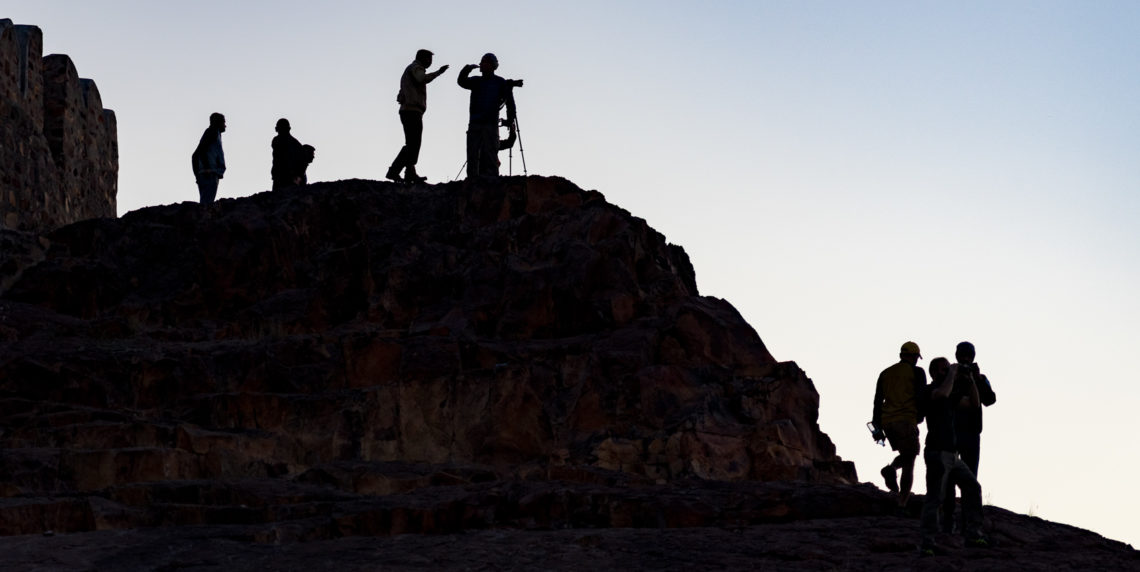
Jodhpur is the second largest city in Rajasthan and popularly known as the Blue City of India, for its blue painted buildings in the old districts. Jodhpur is also filled with forts, temples, palaces, murals, friendly people, havelis(mansions with historic and architectural significance), and located in the arid Thar Desert. It is a strategic military site for the Indian Air Force, as it is only 250 km from the Pakistan border. Jodhpur has a population of more than a million and now declared as a metropolitan city.
We last visited Jodhpur in 1995, but didn’t see the same places. It is amazing how having a different focus gets you to see more. Back in 1995, wee were on a trekking tour to see the Pushkar Camel Fair, and on this tour, we were on a photographic mission to discover many of the hidden visual gems from a totally different perspective and under great light conditions. We frequently skip regular meals times on this type of trip, to capture the best light.
Above is an image of our photo group shooting from the hill facing towards Jaswant Thada, an architectural marvel made out of intricately carved white marble and known as the Taj Mahal of Marwar. It was built as a memorial to the Maharaja Jaswant Singh II, and a graveyard site for the subsequent Marwar rulers.
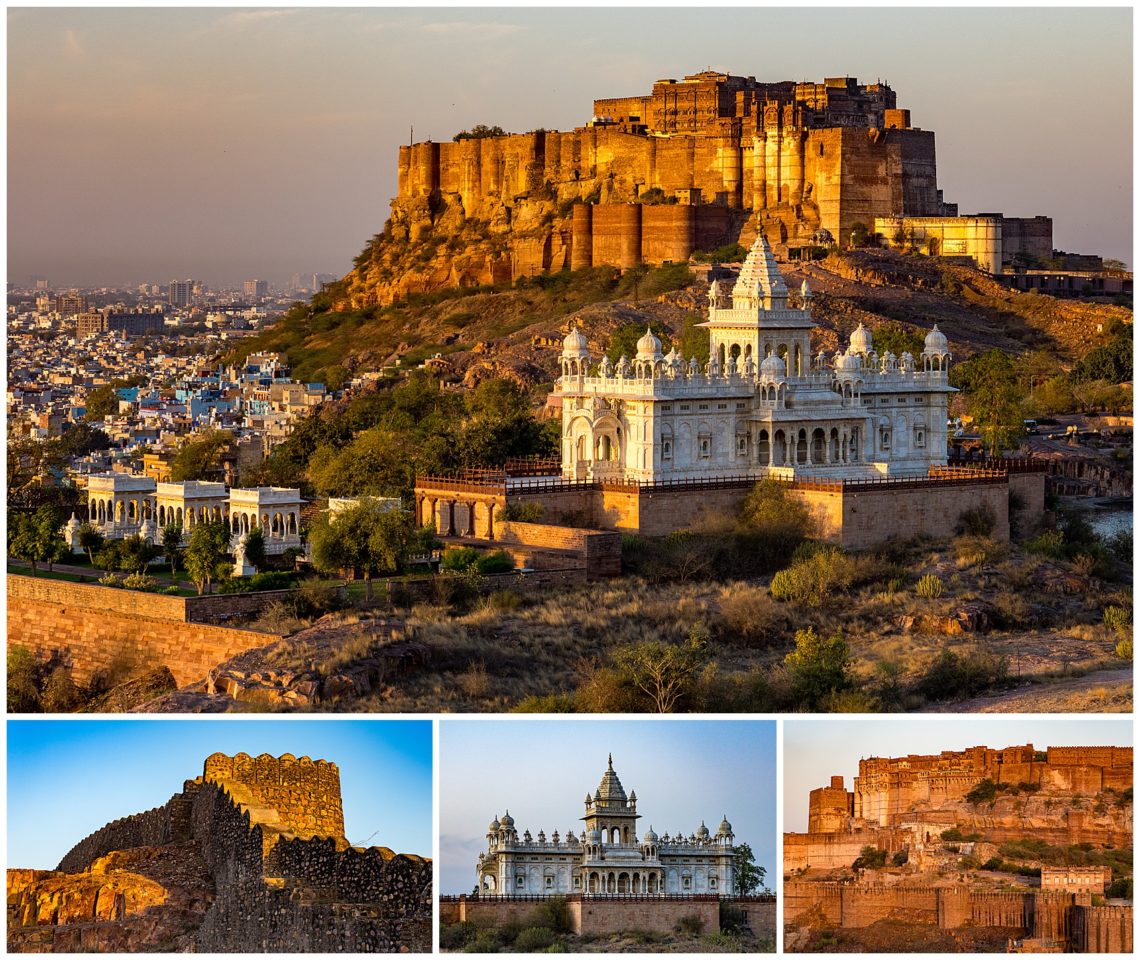
At sunrise, you can see the white marble masterpiece in the foreground with the Mehrangarh Fort located above at the highest point overlooking the city. In the late afternoon, we again photographed the view over the Blue City with the Mehrangarh Fort in the background.
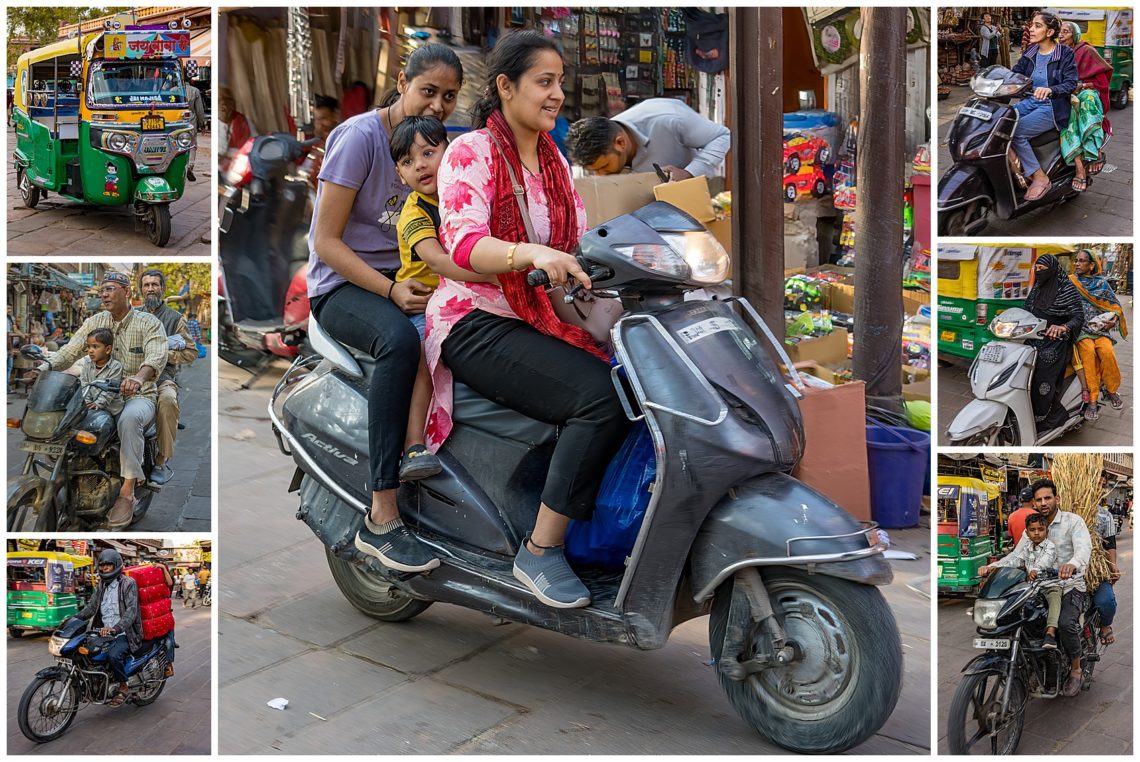
We then went to the neighborhood located at the very end of the Blue City. There is a helmet law for people on motorbikes, but it is ignored by about half the riders. In particular, it is common to see a single motorcycle with entire families including as many as 3 children plus 2 adults… and no helmet in sight. We did see two collisions between cars and motorcycles, but they were always low speed accidents where the there was never more than a bruise or two resulting. After some harsh words between the drivers, both always went on their way.
Continuous horns can be heard. We have heard many explanations for the constant honking. First we were told there is a law that if a car hits a pedestrian but honks first, the car is not at fault, since the pedestrian was warned. However, I can find no verification of such a law, and one driver told me that the driver is automatically at fault in any such collision, regardless of circumstances. Others have said (and personal experience supports) that it is a way to notify others nearby that you are there. Given the chaotic driving, where lanes are totally ignored as vehicles go in every possible direction, there is some logic to that. And there, there is the simple frustration fact. Traffic in India is almost always at a logjam and standstill, and people honk when they are angry at the delay — just as they do in New York or any other city in the world.
In short, India is a very noisy place. Do not expect to find much quiet anywhere in the cities here…!
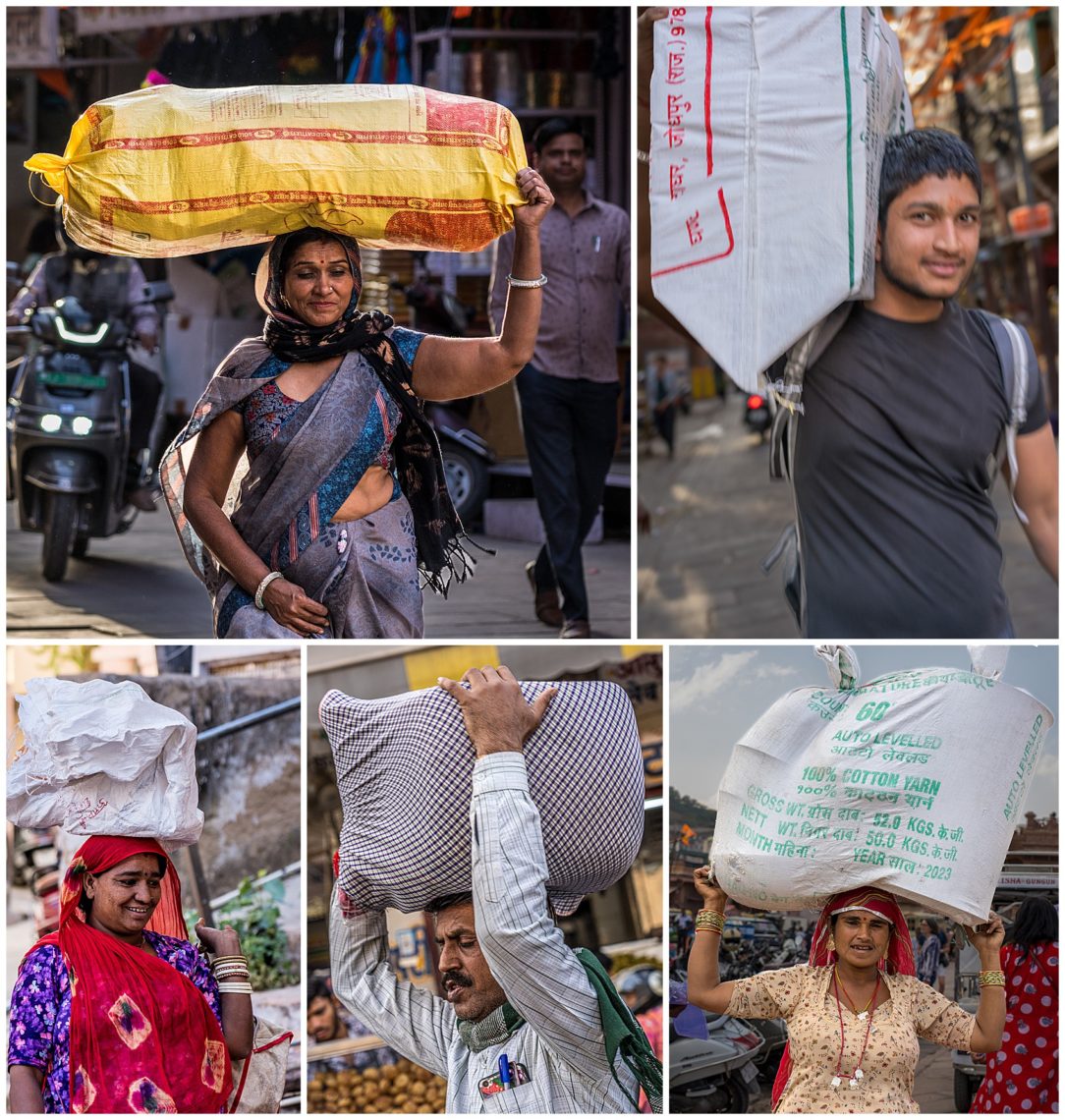
Carrying large loads is often a balancing act. You will sometimes see a large flatbed cart filled with bags and wonder how any person can push it. More often though, the streets are so crowded that the people just carry their large loads on their heads, as they weave through the heavy street traffic. Though large loads are usually balanced with at least one hand (top row and lower-left), we also often saw people (usually women) walking with perfect poise and balancing their load on the head with no support from any hands.
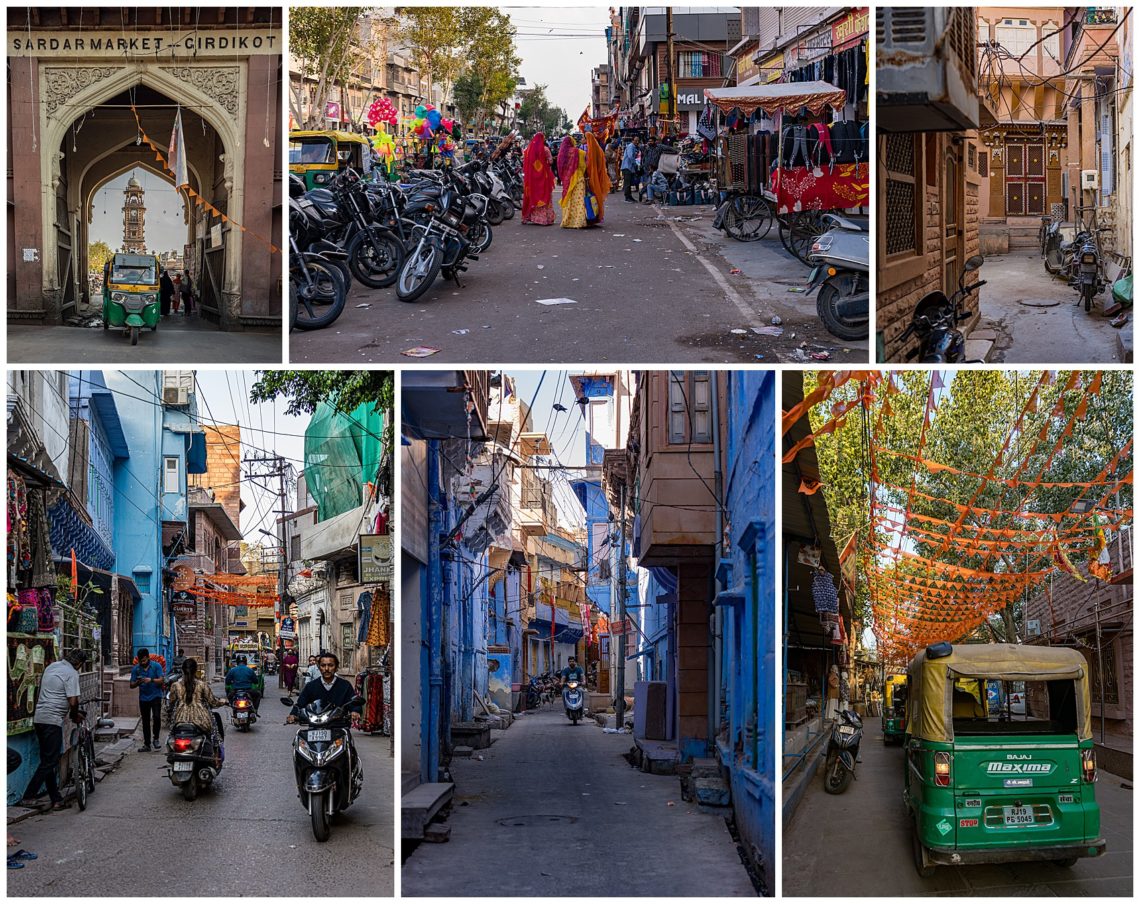
We toured the neighborhood that is popularly known as the Blue City. The neighborhood was once painted exclusively blue as a visible symbol of the caste of those living there. The rule requiring such obvious display of caste has been abolished though, and many people chose to change the color of their buildings. As such, blue buildings are now only found in small clusters. It is another chaotic part of the city, filled with people, motorbikes, tuk tuks and cars. Pedestrians beware.
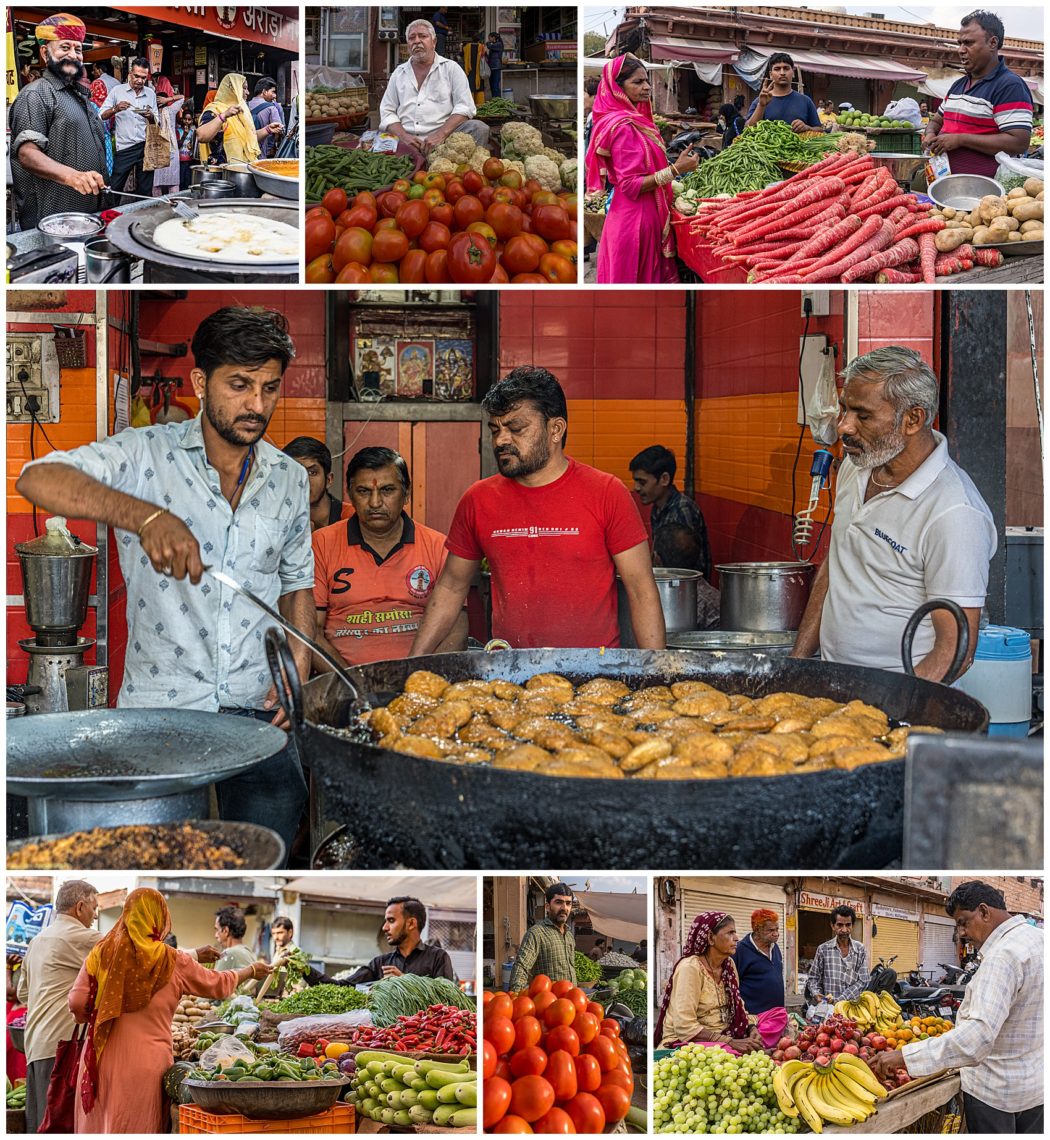
in Jodhpur, we photographed the vibrant market known as Sardar Market. This is also the neighborhood located in the very beginning of the Blue City. You see lots of fresh produce and large vats of street food being prepared at the market.
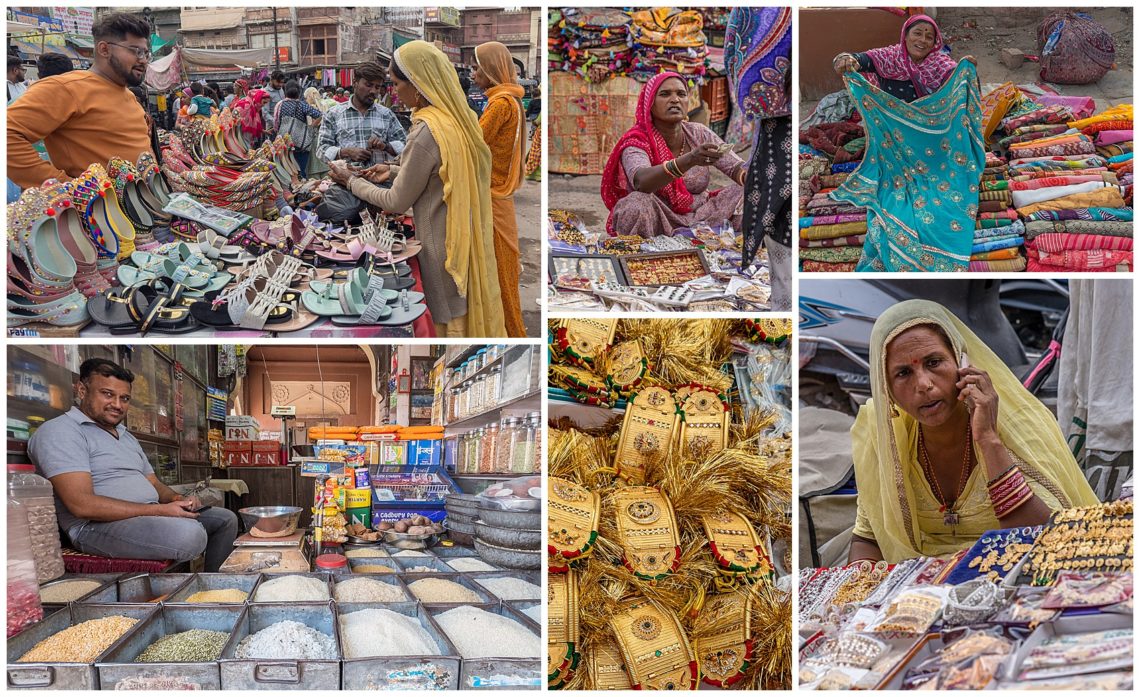
Everything is for sale, from fresh fruits and vegetable to dry goods. We have seen open markets like this worldwide.
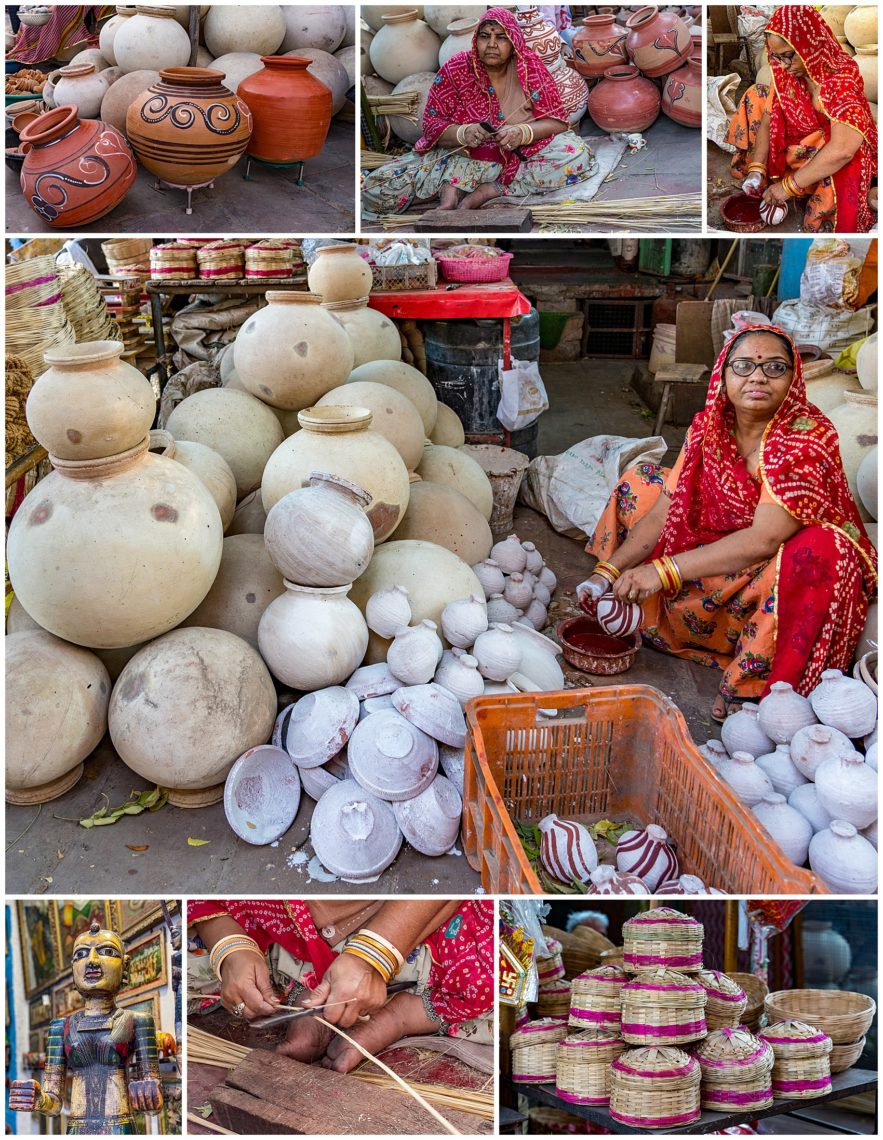
Many handicrafts were being made in small stalls along the way, with the artisans happy to demonstrate their techniques, hoping you will then buy some of their wares. Above are a few artisans weaving baskets or decorating clay pots.
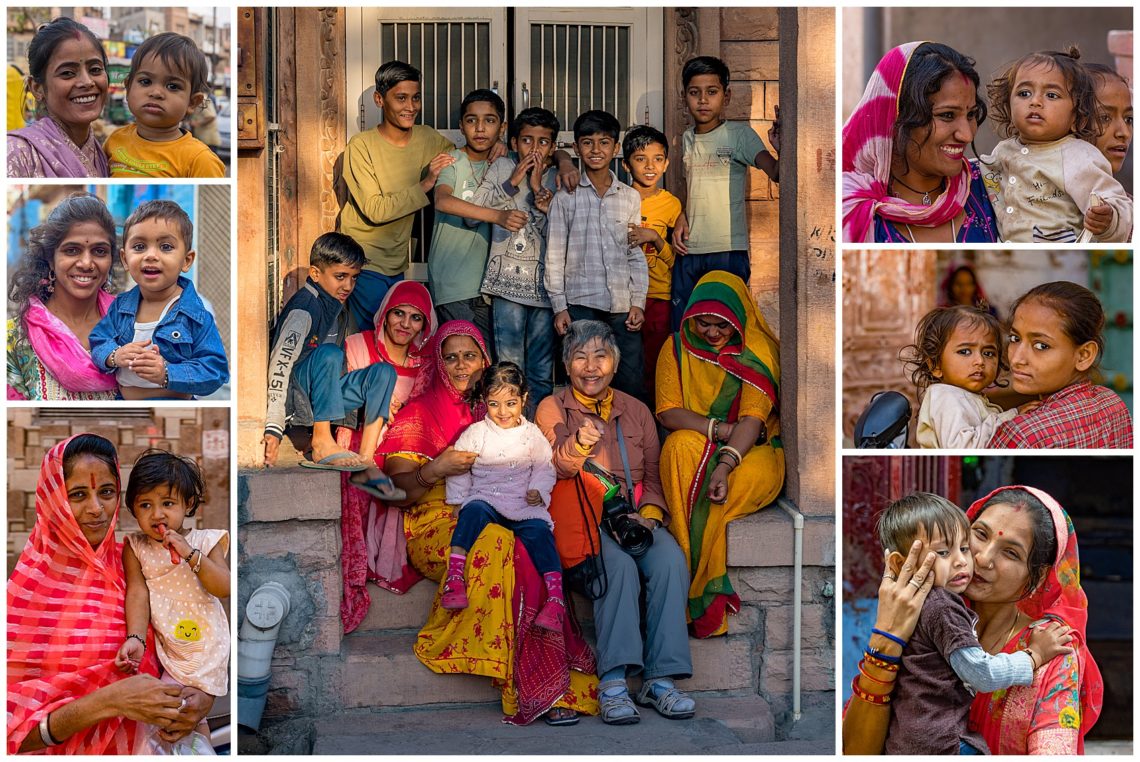
Universally, you can see the loving parent and child bond. In India, we noticed a lot of children and very young people. Nearly half of the country’s population is below the age of 25. Also, 25% of the population are in the 0-14 year old category. This year, India surpassed China as the #1 most populous country. India’s GDP is growing around 7% a year, yet you wonder where so many young people will find jobs in the future.
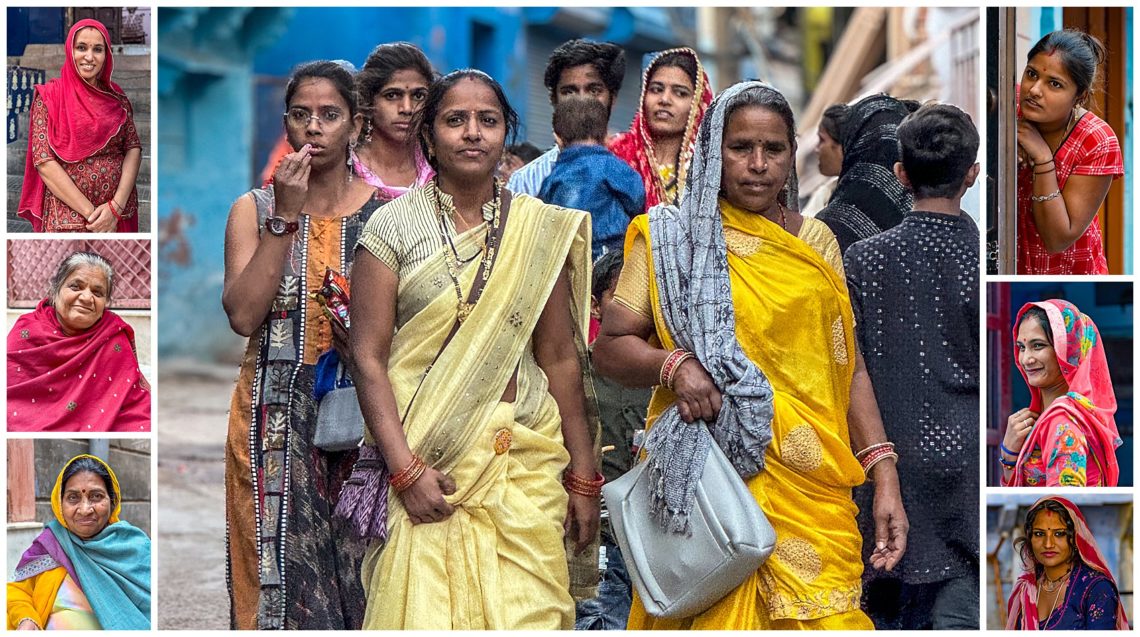
The women in India always dress quite well. They dress up to go to the market, getting water from the well, and even when they’re working in the agricultural fields. You continually see a display of bright colors and beautiful embroidery in traditional clothing whenever you visit the local markets. The men, on the other hand, are generally dressed in drab, western pants and shirts.